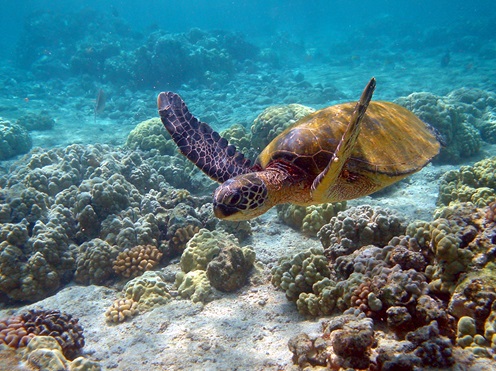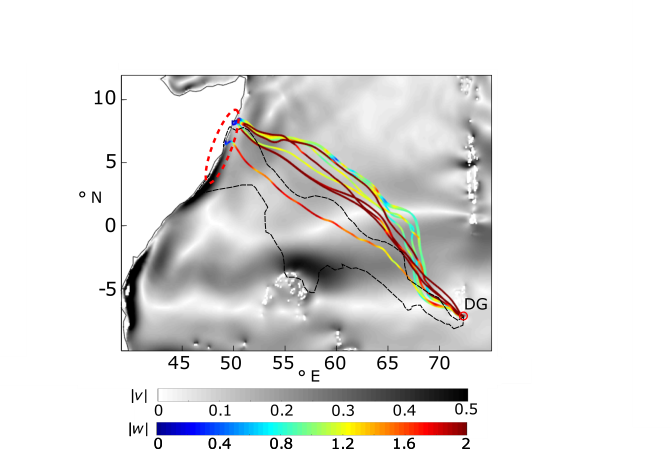In a new paper, researchers from the Centre for Ocean Life explore the way behavioural traits can influence long-distance migration patterns of large organisms such as sea turtles in the ocean.
On land, the fastest way from a point A to a point B is always a straight line. In the ocean, however, currents can help or hinder organisms to reach their target. As such, if an organism is travelling at a constant speed, the fastest way is one that makes “smart” use of the currents. This optimal navigation problem was first formulated by Ernst Zermelo as early as 1931.
Organisms, however, do not necessarily travel at a constant speed. They do not necessarily aim to arrive at destination as fast as possible, but may want to manage their energy expenditure in a certain way. We modified Zermelo’s approach and created a framework that reproduces the optimal migration of marine organisms according to their behavioural traits. The behavioural traits considered are the importance given to a fast arrival vs. the importance to save energy, and the “level of risk” that organisms are willing to take during their migration. Indeed, ocean currents are subject to stochasticity, and organisms are subject to imperfect behaviour. In consequence, migrating in favourable currents but close to dangerous counter-currents can incur a high cost to pay in case of unfavourable random currents, and avoiding such zones can be beneficial to organisms with low boldness levels.
Further, based on this model, we developed a method that can reconstruct the most likely behavioural traits associated with the observed track of organisms. This method was only tested with numerically-generated tracks, but showed accurate reconstruction of the associated behavioural traits. Now, this method can be used to learn more about organisms’ traits using real tracks, thus providing a deeper knowledge of the ecology of the migrants in focus.
Read the paper here.
Pinti J., Celani A., Thygesen U.H., Mariani P. (2020) Optimal navigation and behavioural traits in ocean migrations. Theoretical Ecology, doi: 10.1007/s12080-020-00469-4

A green turtle. Copyright Brocken Inaglory, under license CC BY-SA 3.0

Figure: Tracks generated by the model for organisms migrating in the Indian Ocean between Diego García (DG, red circle) to the Somalian coast (red dashed ellipse) with different behavioural parameters. The track colour represents the swimming speed. Dashed black lines are observed migration tracks of green turtles. Figure reproduced from Pinti et al. (2020).